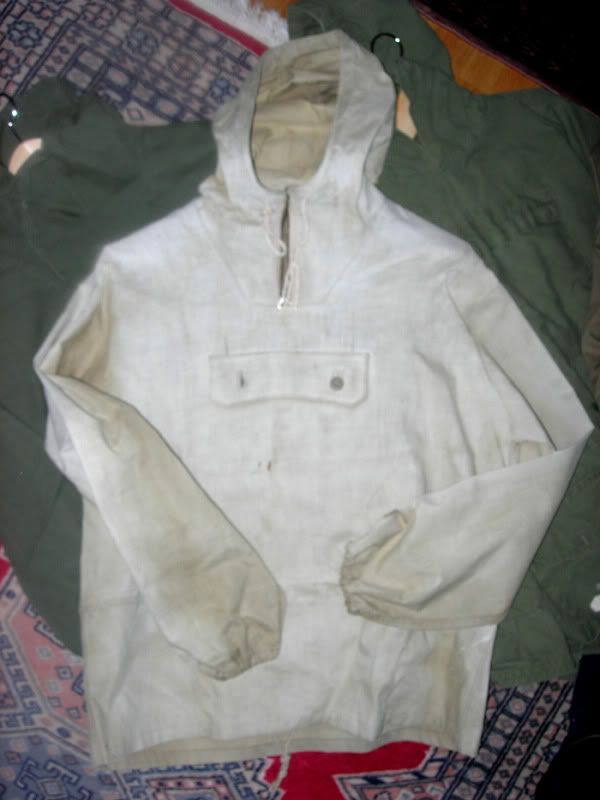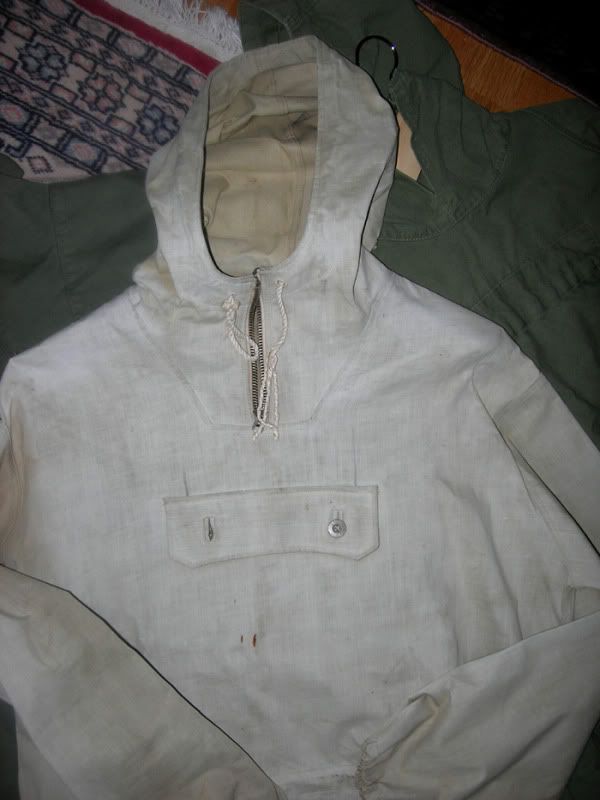H.Johnson
One Too Many
- Messages
- 1,562
- Location
- Midlands, UK
Many people (including some manufacturers) treat Ventile(R) and other cotton fabrics with an extra proofer to enable them to shed surface water more readily. Some people say this inhibits the intended method of forming a barrier by expansion of the threads. I don't know, because I haven't carried out comparative tests of proofed and unproofed Ventile(R). I never believe any claim I haven't tested myself. Maybe the people at Leeds Uni. have done such a test.
I have a sample of cloth woven by a (very) traditional Lancashire weaver to a design more than fifty years older than Ventile(R) that is on the hydrostatic test rig at work as I type this. By tomorrow I should know if it outperforms Ventile(R) in the test. I suspect (owning a jacket made from it) that it will... typical Ventile isn't the best fabric for the British climate. Too wet and not cold enough for it, I think.
An interesting point - the family firm that wove the cloth mentioned above offered to produce windproof cloth for the Ministry of Supply in WW2, submitted samples and was made to shut down for the duration of the war 'due to the shortage of cotton!' Then the Shirley Institute just down the road came out with Ventile(R).
The same firm offered cloth for the 1952-3 Everest expedition, which was again rejected in favour of a man-made fibre mixture specified by the RAE, Farnborough. They thought the Government was against them...surely not???
One thing I've just found to ponder on... speaking to a friend who is a firefighter, he tells me that their hoses are made of some kind of natural woven cloth. Now THAT would have to be waterproof! I wonder what they are made of?
I have a sample of cloth woven by a (very) traditional Lancashire weaver to a design more than fifty years older than Ventile(R) that is on the hydrostatic test rig at work as I type this. By tomorrow I should know if it outperforms Ventile(R) in the test. I suspect (owning a jacket made from it) that it will... typical Ventile isn't the best fabric for the British climate. Too wet and not cold enough for it, I think.
An interesting point - the family firm that wove the cloth mentioned above offered to produce windproof cloth for the Ministry of Supply in WW2, submitted samples and was made to shut down for the duration of the war 'due to the shortage of cotton!' Then the Shirley Institute just down the road came out with Ventile(R).
The same firm offered cloth for the 1952-3 Everest expedition, which was again rejected in favour of a man-made fibre mixture specified by the RAE, Farnborough. They thought the Government was against them...surely not???
One thing I've just found to ponder on... speaking to a friend who is a firefighter, he tells me that their hoses are made of some kind of natural woven cloth. Now THAT would have to be waterproof! I wonder what they are made of?




